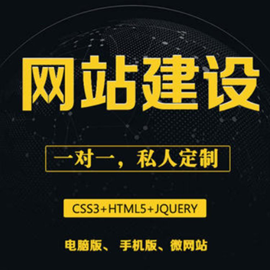PyQuery怎么在Python中使用-創(chuàng)新互聯(lián)
這篇文章給大家介紹PyQuery怎么在Python中使用,內(nèi)容非常詳細,感興趣的小伙伴們可以參考借鑒,希望對大家能有所幫助。

安裝
PyQuery庫官方文檔
初始化為PyQuery對象
常用的CCS選擇器
偽類選擇器
查找標簽
獲取標簽信息
初始化為PyQuery對象
html = """ <html lang="en"> <head> 簡單好用的 <title>PyQuery</title> </head> <body> <ul id="container"> <li class="object-1">Python</li> <li class="object-2">大法</li> <li class="object-3">好</li> </ul> </body> </html> """
相當于BeautifulSoup庫的初識化方法,將html轉(zhuǎn)化為BeautifulSoup對象。
bsObj = BeautifulSoup(html, 'html.parser')
PyQuery庫也要有自己的初始化。
1.1 將字符串初始化
from pyquery import PyQuery as pq #初始化為PyQuery對象 doc = pq(html) print(type(doc)) print(doc)
返回
<class 'pyquery.pyquery.PyQuery'> <html lang="en"> <head> <title>PyQuery學習</title> </head> <body> <ul id="container"> <li class="object-1"/> <li class="object-2"/> <li class="object-3"/> </ul> </body> </html>
1.2 將html文件初始化
#filename參數(shù)為html文件路徑 test_html = pq(filename = 'test.html') print(type(test_html)) print(test_html)
返回
<class 'pyquery.pyquery.PyQuery'><html lang="en"> <head> <title>PyQuery學習</title> </head> <body> <ul id="container"> <li class="object-1"/> <li class="object-2"/> <li class="object-3"/> </ul> </body> </html>
1.3 對網(wǎng)址響應進行初始化
response = pq(url = 'https://www.baidu.com') print(type(response)) print(response)
返回
<class 'pyquery.pyquery.PyQuery'>
<html> <head><meta http-equiv="content-type" content="text/html;charset=utf-8"/><meta http-equiv="X-UA-Compatible" content="IE=Edge"/><meta content="always" name="referrer"/><link rel="stylesheet" type="text/css" href="https://cache.yisu.com/upload/information/20200622/113/62531.html" width="270" height="129"/> </div> <form id="form" name="f" action="//www.baidu.com/s" class="fm"> <input type="hidden" name="bdorz_come" value="1"/> <input type="hidden" name="ie" value="utf-8"/> <input type="hidden" name="f" value="8"/> <input type="hidden" name="rsv_bp" value="1"/> <input type="hidden" name="rsv_idx" value="1"/> <input type="hidden" name="tn" value="baidu"/><span class="bg s_ipt_wr"><input id="kw" name="wd" class="s_ipt" value="" maxlength="255" autocomplete="off" autofocus="autofocus"/></span><span class="bg s_btn_wr"><input type="submit" id="su" value="ç?¾åº¦ä¸?ä¸?" class="bg s_btn" autofocus=""/></span> </form> </div> </div> <div id="u1"> <a href="http://news.baidu.com" rel="external nofollow" name="tj_trnews" class="mnav">æ?°é?»</a> <a href="https://www.hao123.com" rel="external nofollow" name="tj_trhao123" class="mnav">hao123</a> <a href="http://map.baidu.com" rel="external nofollow" name="tj_trmap" class="mnav">å?°å?¾</a> <a href="http://v.baidu.com" rel="external nofollow" name="tj_trvideo" class="mnav">è§?é¢?</a> <a href="http://tieba.baidu.com" rel="external nofollow" name="tj_trtieba" class="mnav">è´´å?§</a> <noscript> <a href="https://cache.yisu.com/upload/information/20200622/113/62532.gif?login&tpl=mn&u=http%3A%2F%2Fwww.baidu.com%2f%3fbdorz_come%3d1" rel="external nofollow" name="tj_login" class="lb">ç?»å½?</a> </noscript> <script>document.write('<a href="https://cache.yisu.com/upload/information/20200622/113/62532.gif?login&tpl=mn&u='+ encodeURIComponent(window.location.href+ (window.location.search === " rel="external nofollow" " ? "?" : "&")+ "bdorz_come=1")+ '" name="tj_login" class="lb">ç?»å½?</a>'); </script> <a href="//www.baidu.com/more/" rel="external nofollow" name="tj_briicon" class="bri" >æ?´å¤?产å??</a> </div> </div> </div> <div id="ftCon"> <div id="ftConw"> <p id="lh"> <a href="http://home.baidu.com" rel="external nofollow" >å
³äº?ç?¾åº¦</a> <a href="http://ir.baidu.com" rel="external nofollow" >About Baidu</a> </p> <p id="cp">©2017 Baidu <a href="http://www.baidu.com/duty/" rel="external nofollow" >使ç?¨ç?¾åº¦å??å¿
读</a> <a href="https://cache.yisu.com/upload/information/20200622/113/62533.html"/> </p> </div> </div> </div> </body> </html>二、常用的CCS選擇器
打印id為container的標簽
print(doc('#container'))
print(type(doc('#container')))返回
<ul id="container"> <li class="object-1"/> <li class="object-2"/> <li class="object-3"/> </ul> <class 'pyquery.pyquery.PyQuery'>
打印class為object-1的標簽
print(doc('.object-1'))返回
<li class="object-1"/>
打印標簽名為body的標簽
print(doc('body'))返回
<body> <ul id="container"> <li class="object-1"/> <li class="object-2"/> <li class="object-3"/> </ul> </body>
多種css選擇器使用
print(doc('html #container'))返回
<ul id="container"> <li class="object-1"/> <li class="object-2"/> <li class="object-3"/> </ul>
三、偽類選擇器
偽類nth
print(pseudo_doc('li:nth-child(2)'))
#打印第一個li標簽
print(pseudo_doc('li:first-child'))
#打印最后一個標簽
print(pseudo_doc('li:last-child'))返回
<li class="object-2">大法</li> <li class="object-1">Python</li> <li class="object-6">好玩</li>
contains
#找到含有Python的li標簽
print(pseudo_doc("li:contains('Python')"))
#找到含有好的li標簽
print(pseudo_doc("li:contains('好')"))返回
<li class="object-1">Python</li> <li class="object-3">好</li> <li class="object-4">好</li> <li class="object-6">好玩</li>
四、查找標簽
按照條件在Pyquery對象中查找符合條件的標簽,類似于BeautifulSoup中的find方法。
打印id=container的標簽
print(doc.find('#container'))返回
<ul id="container">
<li class="object-1"/>
<li class="object-2"/>
<li class="object-3"/>
</ul>
print(doc.find('li'))返回
<li class="object-1"/> <li class="object-2"/> <li class="object-3"/>
4.2 子輩標簽-children方法
#id=container的標簽的子輩標簽
container = doc.find('#container')
print(container.children())返回
<li class="object-1"/> <li class="object-2"/> <li class="object-3"/>
4.3 父輩標簽-parent方法
object_2 = doc.find('.object-2')
print(object_2.parent())返回
<ul id="container"> <li class="object-1"/> <li class="object-2"/> <li class="object-3"/> </ul>
4.4 兄弟標簽-siblings方法
object_2 = doc.find('.object-2')
print(object_2.siblings())返回
<li class="object-1"/> <li class="object-3"/>
五、獲取標簽的信息
定位到目標標簽后,我們需要標簽內(nèi)部的文本或者屬性值,這時候需要進行提取文本或?qū)傩灾挡僮?/p>
5.1 標簽屬性值的提取
.attr() 傳入 標簽的屬性名,返回屬性值
object_2 = doc.find('.object-2')
print(object_2.attr('class'))返回
object-2
5.2 標簽內(nèi)的文本
.text()
html_text = """ <html lang="en"> <head> 簡單好用的 <title>PyQuery</title> </head> <body> <ul id="container"> Hello World! <li class="object-1">Python</li> <li class="object-2">大法</li> <li class="object-3">好</li> </ul> </body> </html> """ docs = pq(html_text) print(docs.text())
返回
簡單好用的 PyQuery Hello World! Python 大法 好
object_1 = docs.find('.object-1')
print(object_1.text())
container = docs.find('#container')
print(container.text())返回
Python Hello World! Python 大法 好
tips:如果我只想獲得Hello World這個,不想得到其他的文本,可以使用remove方法將li標簽去掉,然后再使用text方法
container = docs.find('#container')
container.remove('li')
print(container.text())返回
Hello World!
pyquery一些自定義的用法
訪問網(wǎng)址
PyQuery與BeautifulSoup對比,我們會發(fā)現(xiàn)PyQuery可以對網(wǎng)址發(fā)起請求。 比如
from pyquery import PyQuery PyQuery(url = 'https://www.baidu.com')
opener參數(shù)
這是PyQuery對百度網(wǎng)址進行請求,并將請求返回的響應數(shù)據(jù)處理為PyQuery對象。一般pyquery庫會默認調(diào)用urllib庫,如果想使用selenium或者requests庫,可以自定義PyQuery的opener參數(shù)。
opener參數(shù)作用是告訴pyquery用什么請求庫對網(wǎng)址發(fā)起請求。常見的請求庫如urllib、requests、selenium。這里我們自定義一個selenium的opener。
from pyquery import PyQuery from selenium.webdriver import PhantomJS #用selenium訪問url def selenium_opener(url): #我沒有將Phantomjs放到環(huán)境變量,所以每次用都要放上路徑 driver = PhantomJS(executable_path = 'phantomjs的路徑') driver.get(url) html = driver.page_source driver.quit() return html #注意,使用時opener參數(shù)是函數(shù)名,沒有括號的! PyQuery(url='https://www.baidu.com/', opener=selenium_opener)
這時候我們就能對PyQuery對象進行操作,提取有用的信息。具體請看上次的分享,如果想了解更多的功能,pyquery文檔寫的不怎么詳細,好在基本跟jQuery功能吻合,我們?nèi)绻胗煤胮yquery,需要查看jQuery文檔。
cookies、headers
在requests用法中,一般為了訪問網(wǎng)址更加真實,模仿成瀏覽器。一般我們需要傳入headers,必要的時候還需要傳入cookies參數(shù)。而pyquery庫就有這功能,也能偽裝瀏覽器。
from pyquery import PyQuery
cookies = {'Cookie':'你的cookie'}
headers = {'User-Agent':'Mozilla/5.0 (Macintosh; Intel Mac OS X 10_12_5) AppleWebKit/537.36 (KHTML, like Gecko) Chrome/61.0.3163.100 Safari/537.36'}
PyQuery(url='https://www.baidu.com/',headers=headers,cookies=cookies)讓你的selenium帶上pyquery功能
讓driver訪問的網(wǎng)址得到的網(wǎng)頁直接變?yōu)镻yQuery對象,更方便提取數(shù)據(jù)
from pyquery import PyQuery from selenium.webdriver import PhantomJS class Browser(PhantomJS): @property def dom(self): return PyQuery(self.page_source)""" 這部分property是裝飾器,需要知道@property下面緊跟的函數(shù),實現(xiàn)了類的屬性功能。 這里browser.dom,就是browser的dom屬性。 """ browser = Browser(executable_path='phantomjs的路徑') browser.get(url='https://www.baidu.com/') print(type(browser.dom))
返回
<class 'pyquery.pyquery.PyQuery'>
關(guān)于PyQuery怎么在Python中使用就分享到這里了,希望以上內(nèi)容可以對大家有一定的幫助,可以學到更多知識。如果覺得文章不錯,可以把它分享出去讓更多的人看到。
另外有需要云服務器可以了解下創(chuàng)新互聯(lián)scvps.cn,海內(nèi)外云服務器15元起步,三天無理由+7*72小時售后在線,公司持有idc許可證,提供“云服務器、裸金屬服務器、高防服務器、香港服務器、美國服務器、虛擬主機、免備案服務器”等云主機租用服務以及企業(yè)上云的綜合解決方案,具有“安全穩(wěn)定、簡單易用、服務可用性高、性價比高”等特點與優(yōu)勢,專為企業(yè)上云打造定制,能夠滿足用戶豐富、多元化的應用場景需求。
網(wǎng)頁名稱:PyQuery怎么在Python中使用-創(chuàng)新互聯(lián)
地址分享:http://newbst.com/article20/discjo.html
成都網(wǎng)站建設(shè)公司_創(chuàng)新互聯(lián),為您提供建站公司、網(wǎng)站營銷、做網(wǎng)站、手機網(wǎng)站建設(shè)、外貿(mào)網(wǎng)站建設(shè)、網(wǎng)站設(shè)計
聲明:本網(wǎng)站發(fā)布的內(nèi)容(圖片、視頻和文字)以用戶投稿、用戶轉(zhuǎn)載內(nèi)容為主,如果涉及侵權(quán)請盡快告知,我們將會在第一時間刪除。文章觀點不代表本網(wǎng)站立場,如需處理請聯(lián)系客服。電話:028-86922220;郵箱:631063699@qq.com。內(nèi)容未經(jīng)允許不得轉(zhuǎn)載,或轉(zhuǎn)載時需注明來源: 創(chuàng)新互聯(lián)
猜你還喜歡下面的內(nèi)容
- Nginx如何通過upstream和proxy_pass實現(xiàn)了負載均衡-創(chuàng)新互聯(lián)
- 基于LoRa無線技術(shù)溫濕度監(jiān)測的解決方案是怎樣的-創(chuàng)新互聯(lián)
- Python完成哈夫曼樹編碼過程及原理詳解-創(chuàng)新互聯(lián)
- 使用JavaSwing組件開發(fā)畫板(4)-創(chuàng)新互聯(lián)
- mysql數(shù)據(jù)庫亂碼怎么辦-創(chuàng)新互聯(lián)
- vCenterServer返回503服務不可用錯誤-創(chuàng)新互聯(lián)
- PHP偶爾出現(xiàn)Noinputfilespecified.錯誤-創(chuàng)新互聯(lián)

- 網(wǎng)站內(nèi)鏈的作用千萬別忽視 2022-08-21
- 做好網(wǎng)站內(nèi)鏈乃需按這樣 2016-11-01
- SEO技能篇-網(wǎng)站內(nèi)鏈的形式及優(yōu)化原則 2021-02-20
- 網(wǎng)站鏈接架構(gòu)網(wǎng)站內(nèi)鏈如何操作 2021-09-28
- 企業(yè)網(wǎng)站SEO優(yōu)化之如何布局網(wǎng)站內(nèi)鏈系統(tǒng) 2022-10-07
- 青島網(wǎng)站建設(shè)做好網(wǎng)站內(nèi)鏈SEO優(yōu)化,真的可以晉升網(wǎng)站流量嗎? 2023-01-11
- 網(wǎng)站制作和網(wǎng)站內(nèi)鏈有什么樣的關(guān)聯(lián) 2022-06-24
- 需要重視網(wǎng)站內(nèi)鏈建設(shè) 2017-02-27
- 網(wǎng)站內(nèi)鏈錨文本布局方法有哪些? 2020-07-31
- 網(wǎng)站內(nèi)鏈、外鏈是什么?內(nèi)鏈與外鏈的優(yōu)化技巧 2023-03-30
- 網(wǎng)站內(nèi)鏈優(yōu)化需要掌握哪些技巧? 2023-04-29
- 網(wǎng)站內(nèi)鏈建設(shè)切勿泛濫 2021-07-20